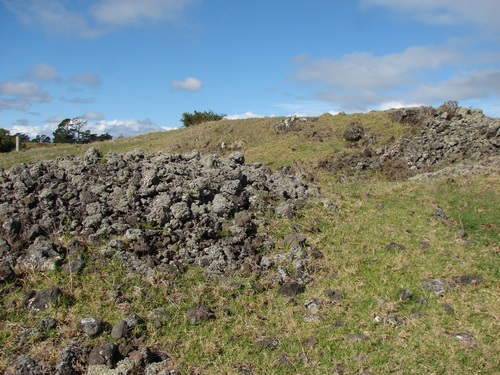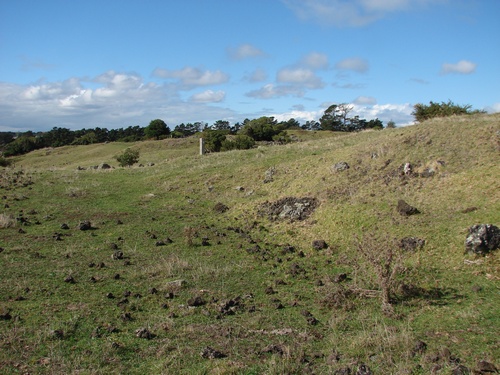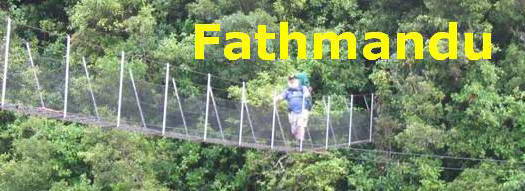Otuataua Stonefields:
The History Trail
page 3
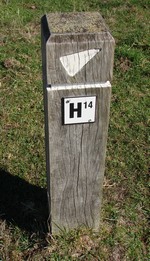
There're some quite marvellous panoramic views to be had across the Manukau and out towards the Heads. Up ahead of us is a barberry hedge. The notes tell us that barberry was used by NZ farmers for fences at a time when wire was short, and I recall them in plenty on our farm at Waiuku.
It's thorny and dense and evergreen, and a favourite for birds to nest in. The seeds are also a favourite food for birds and were thus distributed far and wide beyond their sphere of usefulness. Barberry is regarded these days more as a nuisance than a resource, though there are plenty of hedges still around.
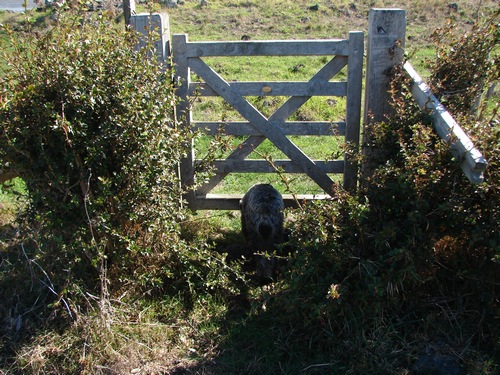
If we did need evidence that the trail gets little patronage and less attention, perhaps this gate will provide it, already in the process of being taken over by the historic barberry hedge.
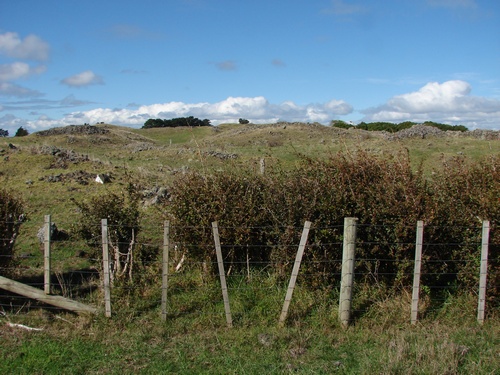
On the other side of the hedge we discover that wire is not so short after all, at least here. The barberry is however hosting a kapok vine, and might be history sooner than we think.
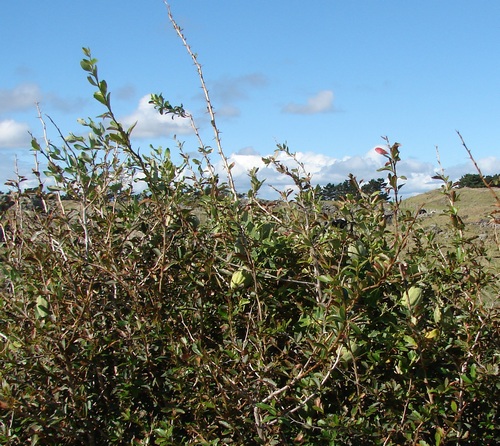
Strange to reflect that in the terms of the WELCOME notice board you could be fined $40,000 for pulling the kapok vine out unofficially.
At this point, the unwary traveller needs to pay careful attention. The arrow on H15, just this side of the gate, points towards an information plaque a few yards away by the stone wall. The trail proper heads in the opposite direction.
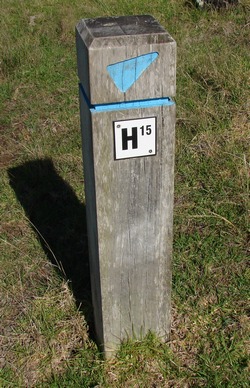
Beyond the far shore of the Manukau, the hills of the Waitakeres are nearly hidden in mist.
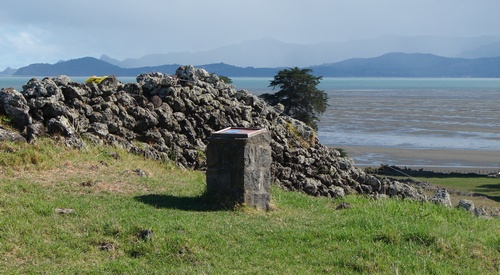
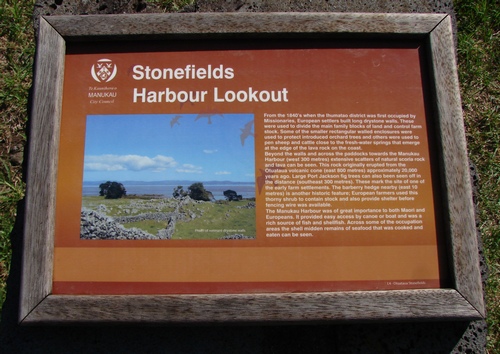
It is while I am looking at this that Alice makes the discovery about the live electric fence wire. The plaque tells us of the early pakeha settlements in the area,
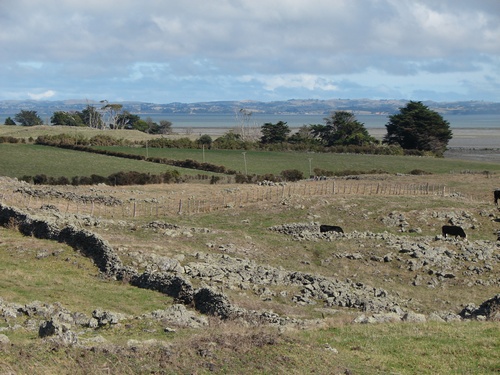
of the use of stone walls for boundaries and to enclose small plantings of orchard trees, and also to pen animals close to freshwater springs emerging from the lava near the shoreline. Notice the contrast between the fields in the distance and those in the foreground.
The track, what there is to be seen of it, appears to carry on down beside the wall and we head on down for a look.
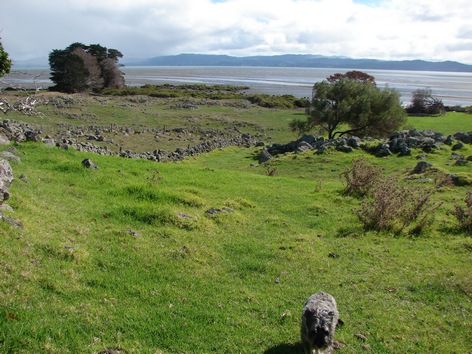
That is indeed an olive tree, but there are no more H-posts to be seen, so we backtrack. It's amazingly green down in this part of the reserve. (This area, to the southwest of the reserve is designated "limited access" on some maps, though there is nothing on the ground beyond the presence of the electric fence that says, "Keep out".)
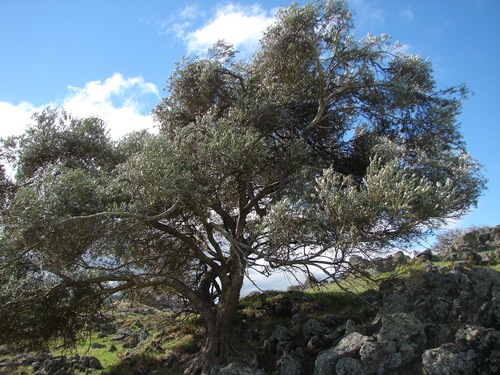
Ah, there it is, about two fifths of the way along the ridge:
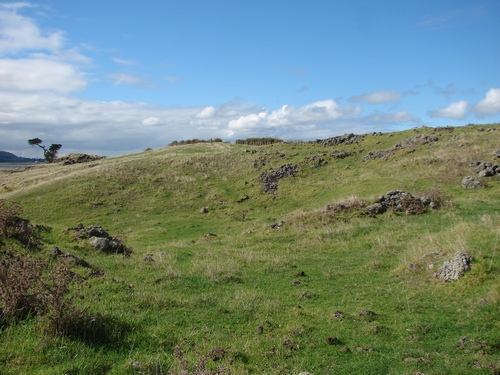
A later glance at the map has the route backtracking from the plaque to H15 and then heading down the side of the barberry hedge. Alice and I head up the side of the ridge, Alice a little more venturesome now we have left the cows behind, but staying well clear of the wire in the fence and anything that looks like a wall..
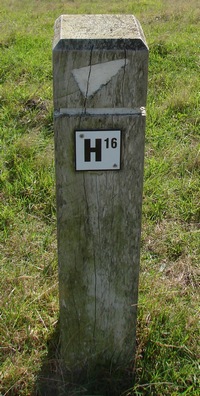
The notes tell me later that this is a midden site. Webster's dictionary records midden as derived from "[ME midding ODan mykdyngja, equiv. to myk manure + dyngja pile]" but the notes refer primarily to shells and cooking stones. There's little obvious evidence, and I shall look more carefully next time I'm past.
Later, I discover a 2005 archaeological report to the Manukau CC, prepared by Louise Furey, which lists 47 different sites of interest inside the stonefields. For those with a pocket GPS, each of these sites is listed with NZMG co-ordinates and a brief description of its significance and preservation status. She is also the author of a more general but useful description of historical Maori gardening practice.
From H16 we head along the fenceline to H17, near a complex of designer gates and posts whose relationship to the vertical is somewhat mixed.
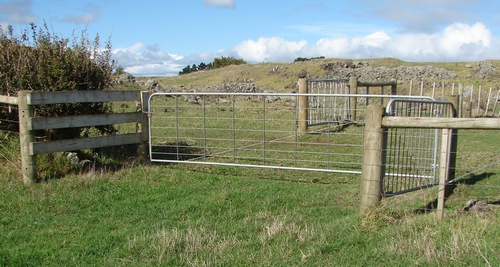
The Manukau CC notes indicate the existence of a former quarry between us and the coast and slightly behind us. Slightly towards Onehunga and downhill the map later shows us another old quarry, outside the reserve but making a sizeable incursion into it. I wonder about its ownership and the politics of the gap. Is it not waahi tapu also? Later research suggests that this quarry was used by Watercare as a source of material for the pond borders.
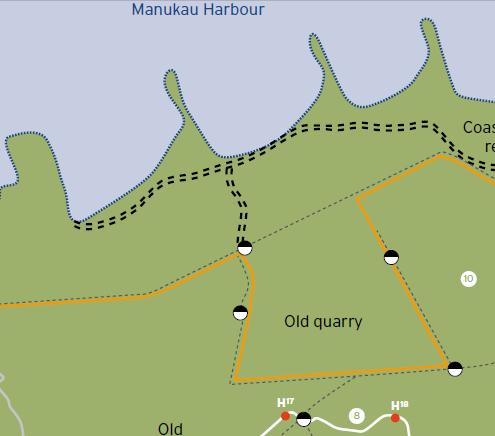
H17 suggests that we head through the gates, so we do. More cows, and Alice gets in behind.
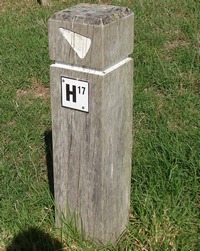
To her evident relief, we spot the next post up ahead in a paddock with no apparent cow issues - no fresh ones at any rate.
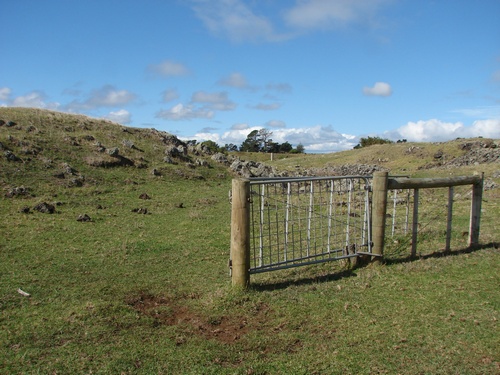
We make our way through a break in the wall and around to the left. There's another midden site near here, but again, I need to pay closer attention next time I come through. This is not a site that you can properly take on board in one go.
